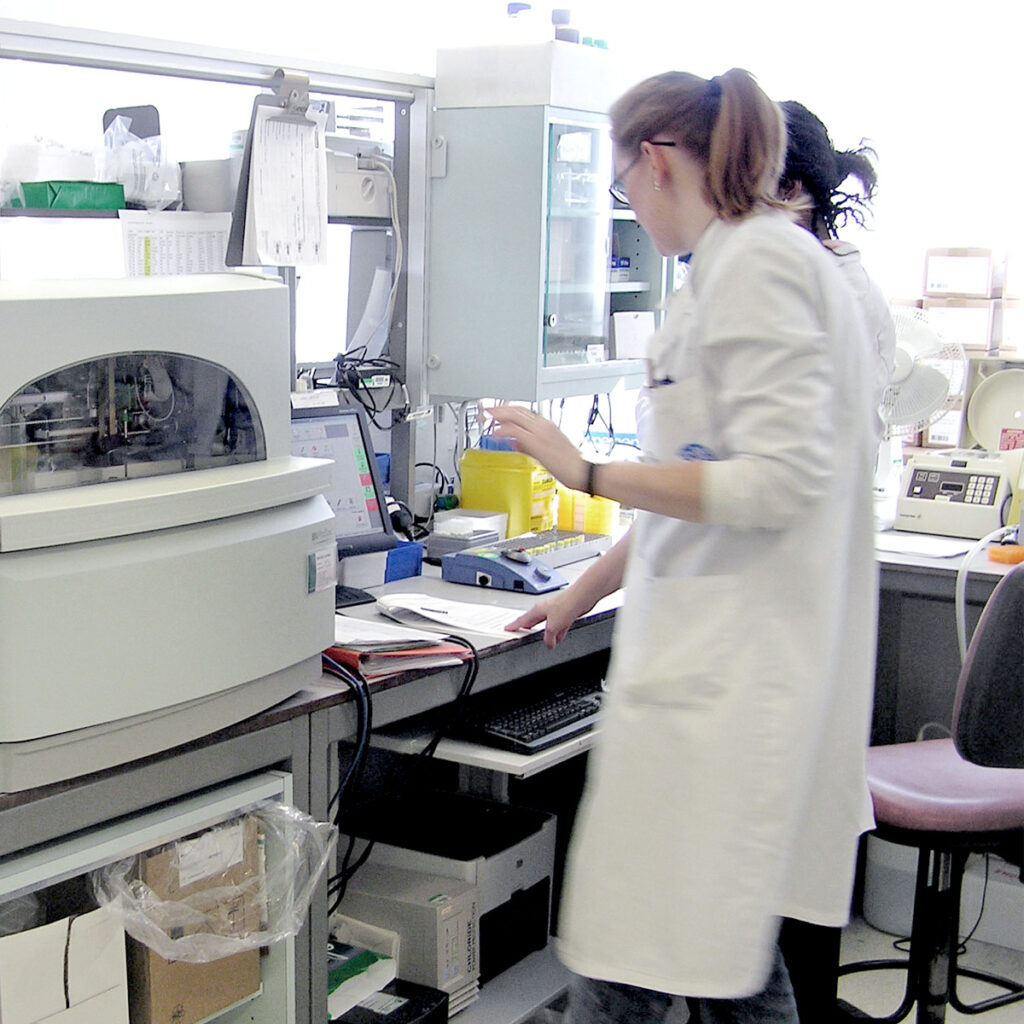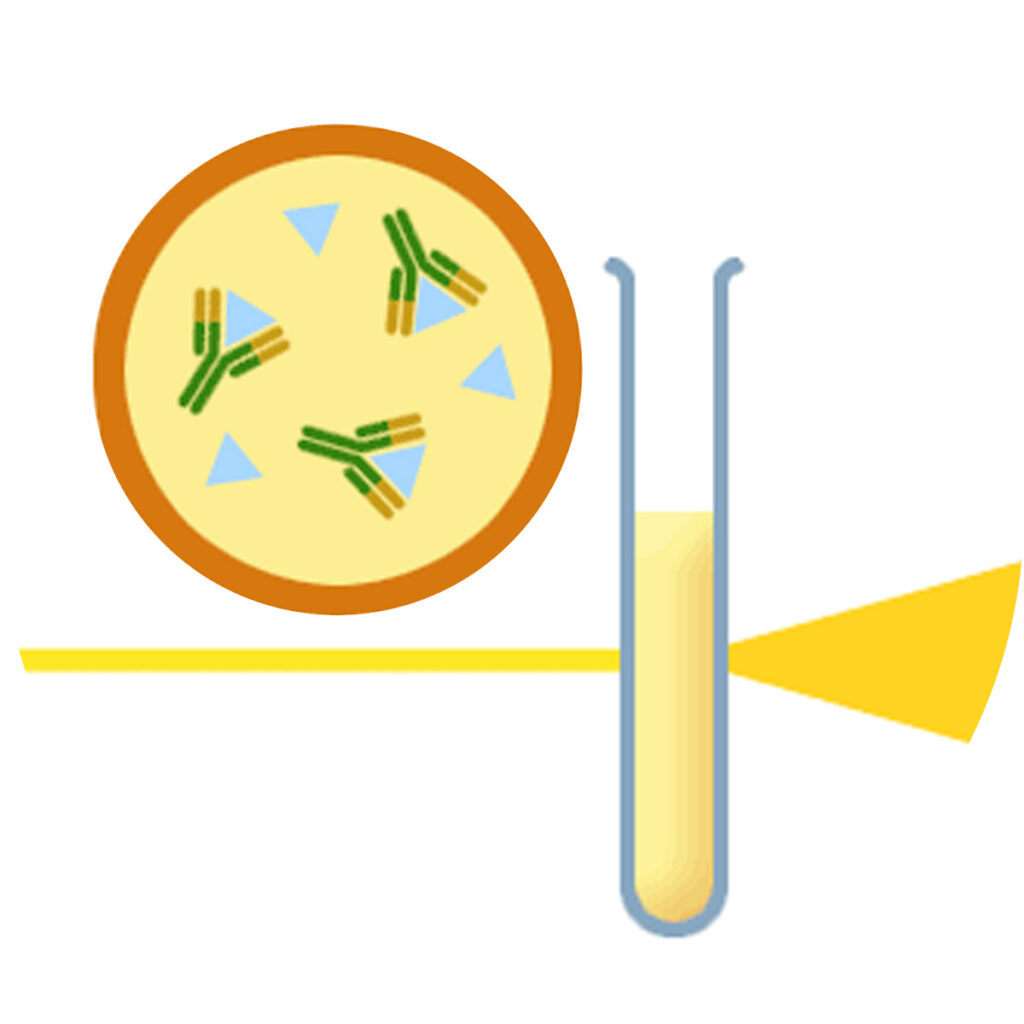Summary

Nephelometry is a tool used in immunology laboratories for testing levels of proteins that are important to effective immune responses. These techniques are used in the diagnosis and monitoring of many immunological conditions from some immunodeficiencies to autoimmune disease like Systemic Lupus erythematosus (SLE). The technique uses the amount of light that is scattered when passed through a solution containing immune complexes to determine the amount of protein present. Because this assay is used for many patients with different problems it is generally automated.
Science

The principles of nephelometry, as with many immunological assays, rely on the reactions between antibodies (specific proteins of the immune system) and antigens (proteins that antibodies recognise as “foreign”). A single antibody is specific for one particular antigen and when these two come into contact they bind to each other strongly. These antigen/antibody structures bind to one another to form large aggregations and it is these “immune complexes” that are measured in nephelometry. The antibodies that are used to generate the immune complexes are created artificially by commercial companies and have a single specific affinity for the proteins that the laboratory wishes to measure. When the patient serum has been mixed with the commercial antibodies a light source is passed through the solution and sensitive detectors determine how much light is scattered by the presence of immune complexes in suspension. More immune complexes will form in solution with increasing amount of the protein in serum therefore the increase in light scatter is indicative of higher levels of protein. The exact amounts can be determined by comparing with the light scatter from solutions of known protein concentration
Clinical
Nephelometry is a widely used technique for investigating different immunological problems however they are two different groups of proteins involved in recognition and clearance of pathogens that are regularly measured; Complement proteins and Immunoglobulins.
Complement proteins are a set of specialised molecules that when activated are important in targeting and killing infectious microorgansims. This is achieved through various processes from coating invading cells making them easily recognised by cellular components of the immune system, to the direct destruction of target cells by punching holes in the cellular membrane. Measurement of these protein levels in serum serves several purposes on a routine basis.
Patients who have an existing diagnosis of SLE will be monitored using nephelometry to measure certain complement protein levels because when the disease is in an active stage these proteins are actively consumed. Accurate measurement can assist the planning of therapy. It is important, however, to note that complement proteins will also be consumed during an active infection
A patient who arrives at the accident and emergency department with obstructive swelling of the mouth and airways might be considered to be undergoing a severe allergic reaction. However in the absence of other allergic symptoms or an obvious allergen the patient could also have a genetic disease called Hereditary Angioedema. This life-threatening condition results from a deficiency of the regulatory complement protein C1 inhibitor. On suspicion of this problem the doctor would immediately ask the immunology laboratory to measure C1 inhibitor levels by nephelometry.
Complement proteins are also measured in patients who experience recurrent, persistent bacterial infections as the medical staff may suspect an complement immunodeficiency.
Immunoglobulins (antibodies) are measured by nephelometry for two quite different reasons. These proteins are important in effective immune responses against infectious disease so a deficiency could predispose a patient to infections. If a patient presenting with a history of recurrent, persistent infections proves to have low or absent levels of immunoglobulin when measured by nephelometry then an antibody immunodeficiency such as X-Linked agammaglobulinaemia (XLA) or Common Variable Immunodeficiency (CVID) may be indicated.
Finally an individual suspected of having a cancer called Myeloma that causes B-cells to proliferate uncontrollably and produce too much of one specific antibody, may have their Immunoglobulins measured by nephelometry as this may reveal a higher than normal level. Although high immunoglobulin levels measure by nephelometry are indicative of myeloma further detailed investigation by a process called protein electrophoresis is required to determine the exact nature of the faulty immunoglobulin.
